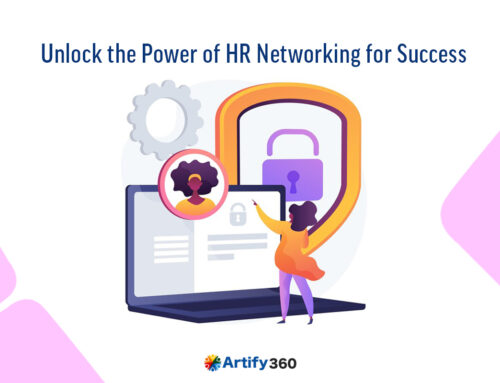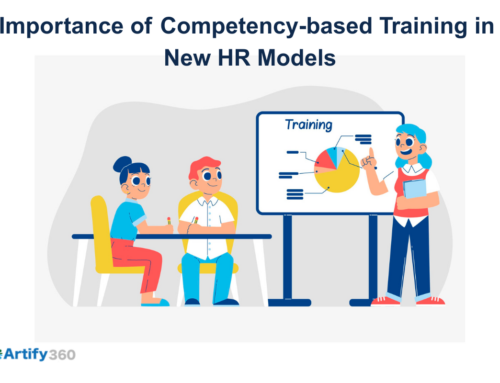Organizations thrive based on different trending currencies according to their time and effectiveness. These currencies could be anything and oscillate between internal and external factors. Most of these currency parameters come under the jurisdiction of HR personnel.
In this post, we will discuss the concept of how to improve employee experience and make it work for your organizational objectives. Though it may sound like an innovative HR feature, the organizational function has been a part of businesses in parts for some time now. The defining challenges and future scope of the segment are addressed in this post. Feel free to browse through numerous online resources that concentrate on the significance of employee experience.
Brief Overview of Employee Experience
You cannot explain employee experience as a single, rounded idea that directly does what it says. It is a collection of the sum of numerous topics that constitute the signature concept. In general, it is the total experience of an employee at an organization, which is constructed from every single aspect of the company, that the resource partakes in.
However, a generalized view won’t explain the prime point of employee experience subject matter. The distinguishing feature here is that each experience of a human capital resource is considered here. Employee experience summarizes the interaction of a resource with other resources, employees, external partners, workspaces (physical and virtual), tools, platforms, access portals, organizational systems, different policies, custom business metrics, etc.
Everything the employee is subjected to and the corresponding responses will be recorded as part of the employee experience. It is significant in raising the competitive advantage of a company in its performing marketplace. A few points are given below to help you understand more about the magnetic employee experience saga.
- Employee experience refers to the holistic experience of a resource within the organization’s workflow.
- In a business environment that offers value to employee experience, the employees will have a sense of belonging and a feel-good factor in the organization’s premises.
- Both positive and negative experiences of employees are calculated in this model. It will help the employees provide ample feedback for the betterment of the organization.
- You can directly connect the automated HR systems and tools to the employee experience programs. It will speed up the whole process and impart an authentic vibe to the concept application.
- In modern marketplaces featuring sustainability practices, employee experience is a crucial factor to ensure the advancement of business performance.
- The presence of employee experience is vital in driving the idea of inclusion in companies. It will give the resources a spirited option to perform well in their respective projects.
- Employee experience is the cumulative assessment of an employee’s performance and response rates to company standards. It is connected to the principles of employer branding and operations interactions.
General Challenges in Optimizing Employee Experience
The fact remains that no guaranteed template or layout shows employee experience paradigms in an organization. You have to arrive at an exclusive scenario with the assistance of the good old trial-and-error method. But to get to this point, there are challenges and issues that you should overcome with the help of digital HR solutions.
Some of these general challenges are shown below:
- Employee perception and prejudice
One of the biggest challenges in maintaining an essential employee experience in an organization is related to factors like bias, prejudice, perceived damages, etc. Though it may seem like an easily controllable factor, HR personnel may ignore it, leading to issues in the organization. Such conflicts could disrupt the potential satisfactory experiences of employees.
- Lack of information
Missing out on information is not new because the wider pool of data may not always be accessible to concerned departments. It is not a sign of the absence of database archives or real-time operational documents. What happens here could either be insufficient tracking of data or inefficient handling of existing databases. Either way, it could end up with events compromising employee experience.
- Lack of confidence
A confident attitude and organized environmental support should be consistently present in companies to promote employee welfare and growth. Unfortunately, this is not the case in every organization. Employee experience in a firm could suffer due to the lack of confidence from any side in fulfilling the organizational activities.
- Employee burnout
The burnout of your human capital resources is not an overrated phenomenon. It is one of the scariest prospects that could diminish the role of a company in delivering employee well-being. The top factors that could lead to the challenge of employee burnout are inefficient process management and unhealthy collaboration with the existing company systems.
- Uninfluential system
The presence of a systematic operational process is important for organizations to feel and reflect the necessary influencing factors in a firm. Here, the focus is on the positive influence that corresponds to the progress of your company. The lack of such influencing features may be a barrier to reaching a digital peak in employee experience potential.
- An issue with resource allocation
The complete allocation of resources and their strict management according to a planned and defined process is necessary for businesses to function well in today’s marketplaces. Some HR divisions may not fulfill this commitment to the company due to a whole host of reasons. Troubles in resource allocation may spell future problems for your employees to experience the business conditions at their best.
- Lack of quality opportunities
Opportunity creation is an important item in companies. Your employee resources may not be thriving in their current roles but still can be redirected to newer roles and bigger, better performances. If the organization is lacking in quality opportunities that employees can utilize for their improvement, it could pose a huge challenge in attaining optimum employee experience.
- Absence of employee welfare programs
Perhaps the challenge from this list that can be resolved with the easiest access to feasible planning could be the absence of employee welfare programs in your organization. It is a known fact that employee engagement is one of the core strategic pillars of HR management. Empower yourself with the gift of well-being programs to achieve satisfactory employee experience performance in the business.
The above is not an exhaustive list of challenges to achieve employee experience. But what matters is that all sorts of challenges have adequate resolutions in this niche.
Future Scope of Employee Experience Programs
Employee experience is still in its growing stages, and the future potential looks bright for the exciting category. You can develop a robust model for generating an optimum employee experience segment in your organization. The future scope of the domain can be detailed as follows:
- Organizational framework
Every organization needs a framework that helps it plan an efficient and systematic operations process. If your business showcases a concept-oriented employee experience, it can assist you in developing an engaging resource framework that you can put to future use. The scope of the employee experience framework is strictly customized and deserves special attention from the company units.
- Customized and responsive experiences
When the employee experience in your organization is working at an optimum level, it is easier for the business unit to design and allocate responsive operations platforms. These portals assist in creating an employee-first scenario where you can leverage and improve the existing work conditions.
- Sync with the employee lifecycle
In current employee lifecycle definitions, new additions are still being made. Appropriate sync is happening at regular intervals, with some factors aiding in more support than others. If your measurements of employee experience are perfectly aligned to meet the goals of the organization for the longer term, it will naturally get connected to the generalized employee lifecycle equation.
- Infusion in hybrid and remote cultures
Nowadays, the concept of employee experience is widely applied to resources working from home. Sooner or later, it will upgrade to include all types of resource distributions in a firm. These include the likes of hybrid teams, fully remote resources, and external/contractual roles. Initially, placeholder techniques will be applied to learn about the employee experience in such profiles and later move on to fixed tactics.
- Full automation mode
Automated processes are exclusively working to provide value to each HR function. With employee experience as a primary measuring factor, the automation functions will be improved for good and might create the next level in digitized professional environments. Though this is usually identified with a technology environment, traditional organizational processes can also follow these with the same enthusiasm.
- Creation of employee personas
You might be familiar with customer personas. Large-scale enterprises must create a customer persona to experience the best target marketing and sales for their company profiles. Mid-level companies and even startups employ the same strategy at various times during the implementation of their marketing funnel. Similarly, you can create and deploy employee personas to segregate your resources based on the generated employee experience quotient at any time.
- Setting up secure and private models
An employee management platform in an organization should be genuine, safe, and focused on privacy. With the execution of an engaging employee experience program, you can easily set up models to match the aforementioned characteristics. It will make the HR personnel’s job easier from a company standpoint. The flexible model setup and employee experience go hand-in-hand concerning the HR norms of the company.
How to Leverage Artify to Create An Impact on Employee Experience?
Artify 360 HR payroll software model promotes the incredible application of all core HR functions that contribute directly to employee experience in organizations. It is future-proof and dishes out a variety of opportunities for resource-related features to excel without fail. If you are looking to create a valuable employee experience template for your firm, then look no further.
Artify 360 cloud HR software’s recruitment, onboarding, training, and HR modules are designed specifically to engage employees to deliver their optimum best in terms of performance. It enables your resources to enjoy their personal lives and professional careers in the organization, thereby adding relevant value to your employee engagement goals.
Discuss with the team at Artify 360 HR software systems to learn more about the interaction with the employee experience certificate programs. You can design custom modules to empower your resources by creating a system unique to your organization’s business model.






